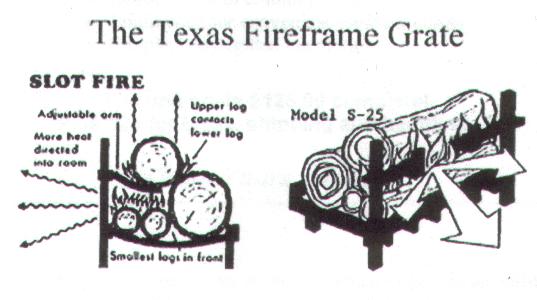

































by Lawrence Cranberg, Ph.D.
Copyright 1995
Summary Copyright © 2005 by
Robert Wayne Atkins, P.E.
All Rights Reserved.
The following summary is for fair use and educational purposes only.

 A large log (six inches in diameter or more - the larger the better) is placed on the back of the grate. Adjacent to it is a smaller log - three inches in diameter at most, with a similar one next to it. An upper log suspended by the distinctive height-adjustable arms of the Texas Fireframe grate contacts the back log and makes a snug cavity that opens to the room. Rolling a few sheets of newspaper that are inserted into the cavity, and a match are all that is needed to start a fire that burns steadily with exceptional intensity and left-to-right uniformity with no attention for about two hours.
A large log (six inches in diameter or more - the larger the better) is placed on the back of the grate. Adjacent to it is a smaller log - three inches in diameter at most, with a similar one next to it. An upper log suspended by the distinctive height-adjustable arms of the Texas Fireframe grate contacts the back log and makes a snug cavity that opens to the room. Rolling a few sheets of newspaper that are inserted into the cavity, and a match are all that is needed to start a fire that burns steadily with exceptional intensity and left-to-right uniformity with no attention for about two hours.
